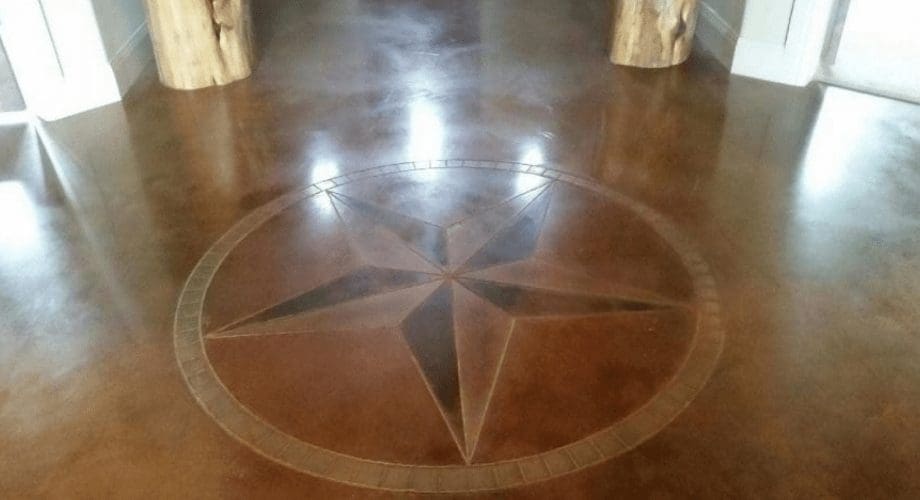Your Guide to Decorative Concrete Flooring
Service: Concrete Resurfacing, Concrete Sealing, Epoxy Floor, Polished Concrete, Resin Flooring, Stained Concrete
In recent years, decorative concrete flooring has become a popular choice among homeowners, as well as designers of commercial and industrial spaces. While some people believe that concrete flooring has to look gray and industrial, concrete’s versatility makes it a viable flooring option for those looking for an aesthetically beautiful space that is affordable and easy to clean and maintain. In this post, we will explore many of the different types of decorative concrete flooring so you can determine if it’s the right type of surface for your home or business.
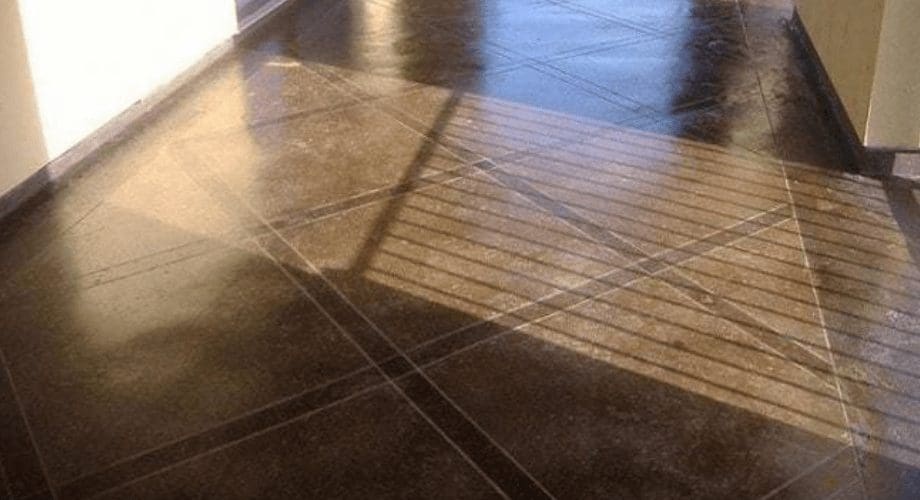

Stained Concrete Floors: The Right Choice for Your Needs?
Whether you’re considering stained concrete floors for your home, business, workshop, or another type of space, you should know that there are many advantages and very few drawbacks. Most people know that concrete flooring is durable, long-lasting and it can handle a lot of wear and tear without breaking down over time. But some people might be concerned about the aesthetic appeal of stained concrete floors, especially in a warmer, more intimate space such as in a home. The truth about stained concrete floors is that they can provide you with subtle colors, bold design elements, and even custom graphic elements, both indoors or outside. These surfaces are extremely customizable, with color choices, patterns, textures, and finishes to satisfy nearly any taste.
In many cases, home and business owners choose to stain concrete because it gives the surface a luxurious, rich appearance that looks Tuscan, “Old World” or organic. Due to each slab’s natural variations, no two floors will look the same, even when using a product in the same shade, making these floors quite unique. Testing a color in an inconspicuous spot is often recommended to get the exact shade you desire. You can even use multiple colors of stain in one space, layer different stains in one area, and layer stains with dyes—the possibilities are practically endless.
Since stains penetrate the surface of your concrete, results are often permanent, making it critical to enlist a professional for the job, rather than doing this yourself. Experienced contractors can create custom colors by blending stains offered by manufacturers to best suit your space. Another reason you should think twice about staining concrete yourself is that some stains contain corrosive ingredients. Without the right protection, a homeowner can experience eye and skin irritation while attempting to work with these products.
Stained concrete floors are especially easy and affordable to install in structures built on an underlying concrete slab foundation that is just waiting to be exposed, leveled, and treated to become a beautiful finished product. The maintenance is easy too, as these surfaces do not require specialized products to keep clean, and it doesn’t absorb moisture.
There are two types of stains: acid-based chemical stains and water-based acrylics. Both types of stains can transform a space, and have superior wear resistance and UV stability. These stains can be applied to a new concrete slab or existing floors.
Acid stains have traditionally been limited to more earthy tones, including terra cotta, tan, brown, and blue-green colors. These stains work by creating a chemical reaction with the calcium hydroxide in the concrete. As the acid reacts with the surface, metallic salts penetrate beneath the surface, becoming a permanent feature of the concrete.
Water-based stains come in an expanded palette, allowing home and business owners to add black, white, yellow, orange, and even metallic hues to their surfaces. Water-based stains are typically made of pigments and acrylic polymers and can create an opaque or translucent finish, based on your preference.
Since stains are meant to enhance a surface, they cannot hide cracks and other imperfections in your concrete. Concrete staining also cannot conceal the surface texture or hide an existing color. Slabs with these kinds of blemishes aren’t usually good candidates for staining unless concrete grinding is performed prior to applying a stain. By the same token, you wouldn’t want to stain concrete that has an existing coating or concrete sealer, since the product will not likely penetrate into the concrete through that extra layer.
Some residential applications for stained concrete include:
- Kitchen counters
- Patios
- Walkways
- Driveways
- Family rooms
- Fireplaces
- Walls
- Ceilings
While stained concrete looks great in residential settings, concrete flooring is also one of the better types of commercial flooring, making this flooring alternative common in restaurants, stores, offices, churches, schools, and more. High-traffic spaces need hardworking, incredibly durable flooring like stained and polished concrete, and since your stained concrete flooring can be customized nearly endlessly, there’s no reason it has to appear industrial—unless that’s the aesthetic you’re going for.
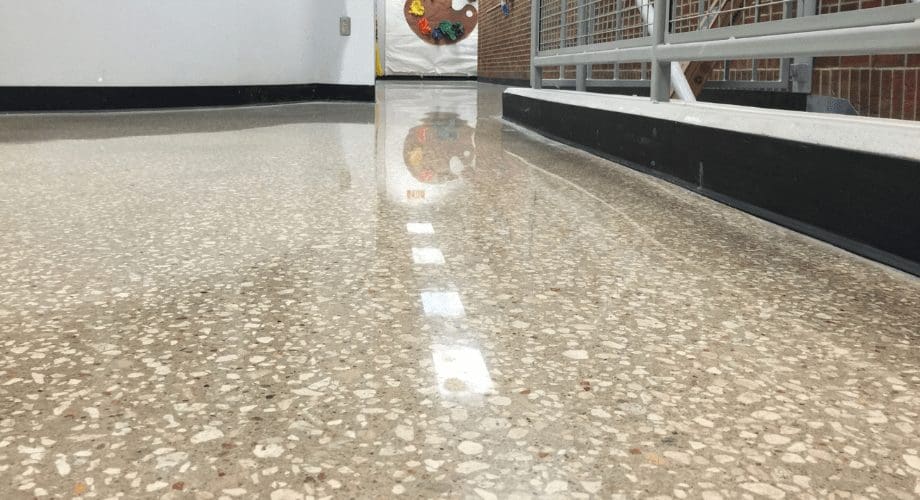

Polished Concrete Floors as a Clean, Contemporary Option
First of all, what is polished concrete? Similar to stained concrete, polished concrete is a flooring option that is affordable, environmentally responsible, easy to maintain, durable, and infinitely customizable for any desired appearance. Polished concrete, while once thought of as boring, is now recognized for what it is: a sleek, stylish alternative to more costly traditional materials, including hardwood floors, carpet, tile, and stone.
Polished concrete floors aren’t just attractive—they are environmentally friendly. Concrete is UV resistant, meaning that natural light that hits the concrete will brighten up any room, and in turn, bring down your electricity bill. This is especially helpful in areas of the home that may not get enough lighting, such as the garage. The resistance to UV rays also means that the color of your decorative concrete flooring won’t fade over time due to damage from the sun like you might experience with hardwood floors.
So what are the drawbacks to polished concrete floors? As with any type of hard flooring, including tile and hardwood floors, there are a few potential drawbacks, depending on your needs and tastes. For example, if you have concrete flooring in your kitchen, you might want to put down-padded comfort mats in front of the stove, sink, or wherever you stand the most. This will reduce the fatigue, discomfort, and joint pain that can come from standing on any hard surface for a long period of time.
In addition, like other hard-surface flooring options, polished concrete can become quite slippery when it’s wet, especially since decorative concrete is moisture-proof and won’t absorb anything that happens to be spilled on its surface. Depending on what type of traffic it sees, your polished concrete floor might also need resealing from time to time as part of your long-term maintenance.
The benefits of polished concrete floors, however, far outweigh the drawbacks. When compared with other popular types of flooring, polished concrete floors are a highly affordable, stylish, eco-friendly choice.
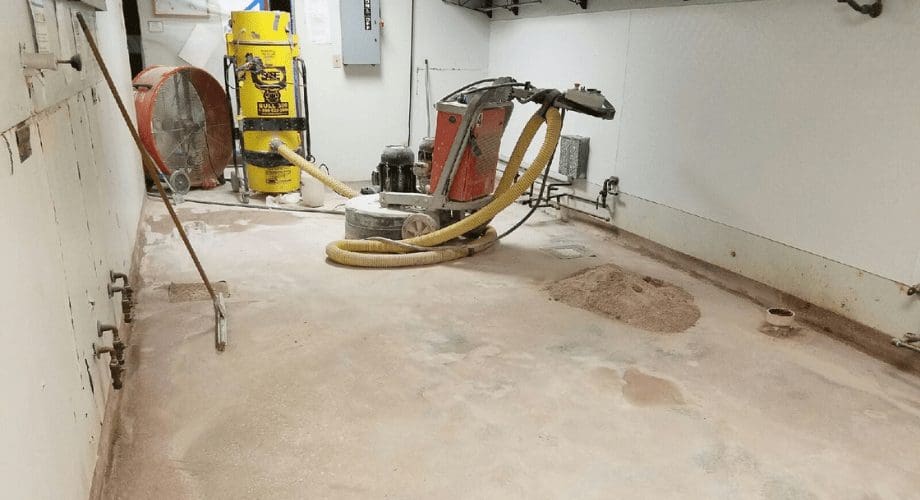

Residential Concrete Floors Offer Beauty and Utility
At home, polished concrete floors are an obvious choice for the basement, garage, or workshop, where durability, functionality, and easy maintenance are much appreciated by most homeowners. Many homeowners opt for stained concrete in more visible living spaces, such as the home’s entryway or front room. With a classic stain, decorative pattern, or stylish finish, your concrete floor can be customized to suit your taste and decor, and it’s an excellent choice for an area of your home that should be both functional and appealing.
Concrete flooring is also often used in the kitchen and bathroom, which are high-traffic rooms in most homes as well as areas prone to spills, water, and moisture. Stained concrete flooring is a perfect choice since it is stain-resistant and incredibly easy to clean and maintain. Whether you wish to create a stylish modern appeal, a warmer homier charm, a more traditional look, or any other type of concept, concrete flooring is so highly customizable that you can select a style that enhances the aesthetic of the space.
Some homeowners are hesitant to have concrete in their bathroom as concrete is sometimes thought of as being cold. However, concrete is actually a wonderful transmitter of heat and makes for a great candidate for heated flooring.
In addition, concrete floors are kid- and pet-friendly, since they’re hard to scratch and don’t absorb stains. Your children and your indoor furry friends would have a hard time damaging either the appearance or the function of your decorative concrete floors. Polished concrete floors are also an excellent choice for those who suffer from allergies since they don’t trap dander, dust, or pollen.
There are many options to choose from among coatings, colors, patterns, and textures for concrete floors. You can select a high-gloss surface that gleams in any light or something with more of a matte finish, or any level of gloss in between. There are endless color choices, which can be mixed into the concrete itself or applied as a stain to the surface. You can also choose decorative saw cuts that add visual interest and texture to the floor’s appearance.
Some homeowners might choose to add interest with a star shape, for example, that is cut and stained into the entryway or another area of the home. Others might opt for a checkered pattern in the kitchen to mirror the classic black-and-white appeal of a traditional diner or cafe. The options are truly endless, limited only by your imagination and the inspiration of your design.
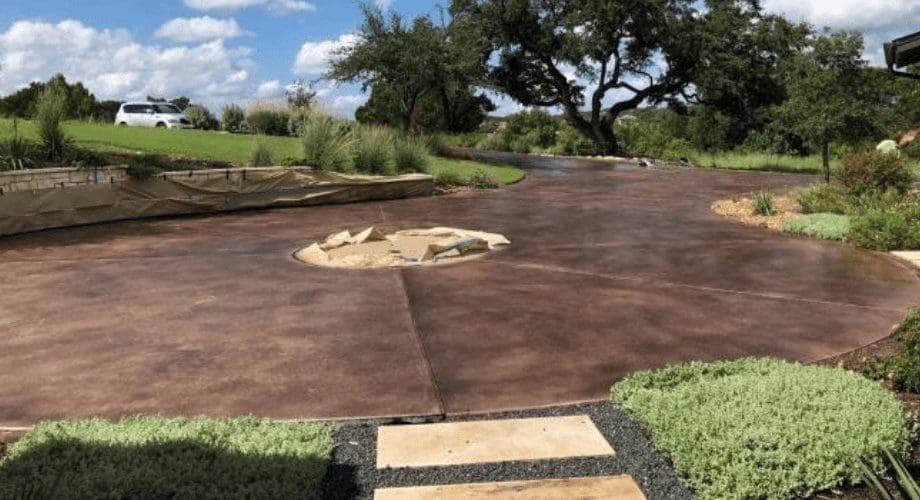

What are Some Concrete Flooring Texture Options?
When it comes to concrete flooring texture, there are plenty of options to help you create the exact look and feel you want. Stamps are a popular choice that is used to create the texture and appearance of wood grain, stone, or brick on a concrete floor. For example, you can stamp an outdoor decking area and then use staining techniques to make the concrete look like a natural stone patio. You can also stamp an indoor floor to make it look like a wood finish.
Saw cutting is a technique that is used to score decorative designs into the surface of the concrete in almost any shape or pattern desired. In homes and commercial spaces, people often choose diamond, square, or chevron patterns that span the entire concrete flooring area to add uniqueness and visual appeal. Many businesses choose to have their logo etched into the concrete floor to add character and branding. These texturing techniques, especially when used along with custom stain choices, can make a concrete floor look like tiles or any other desired aesthetic, creating a stylish, customized, and affordable floor that can stand up to even the most expensive and high-style flooring options.
At AllStar Concrete Coatings, We Deliver Exceptional Results
Given all of the options currently available and the investment you’ll make in your flooring, you’ll want to hire an expert concrete contractor to get the job done right. AllStar Concrete Coatings has been providing custom concrete flooring solutions for home and business owners for decades. We are proud of our craftsmanship, and we commit our time, expertise, and attention to detail at every step of the flooring process. From the design stage, to prepare the surface, to finishing the stain or polish, we provide a thorough service and a beautiful, durable product.
Free Consultation
Ready to learn more about how AllStar can help you? Take advantage of our free consultation to get the ball rolling.
Get Started
